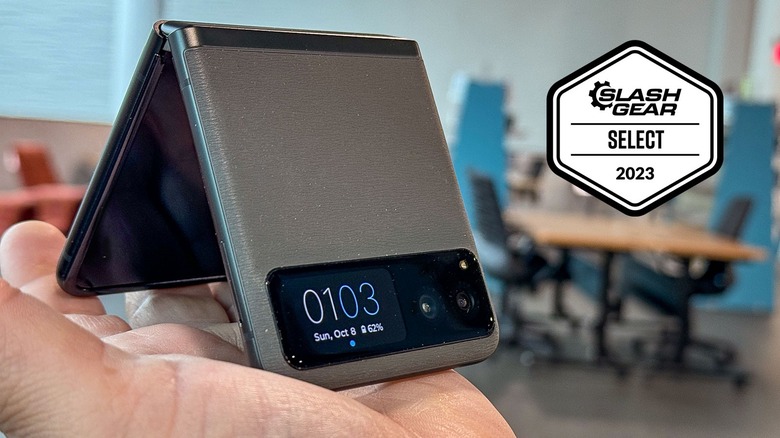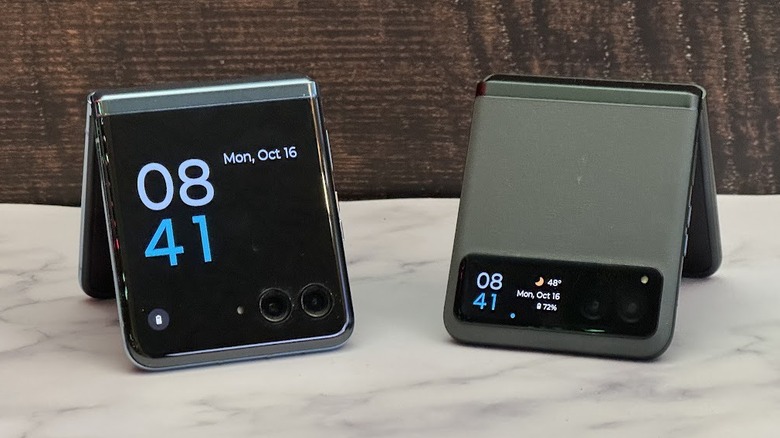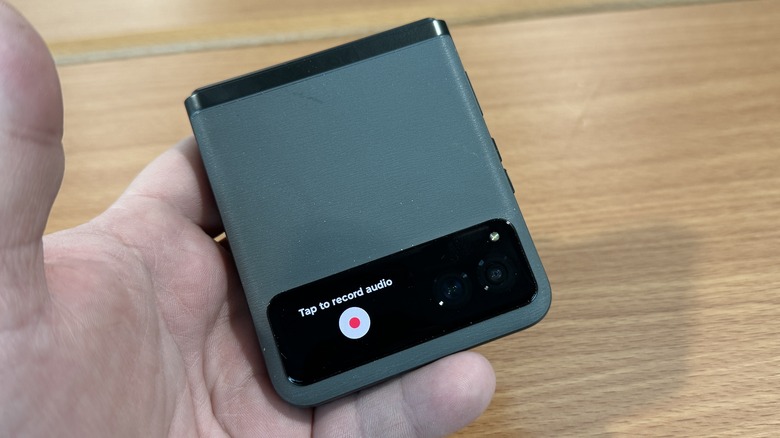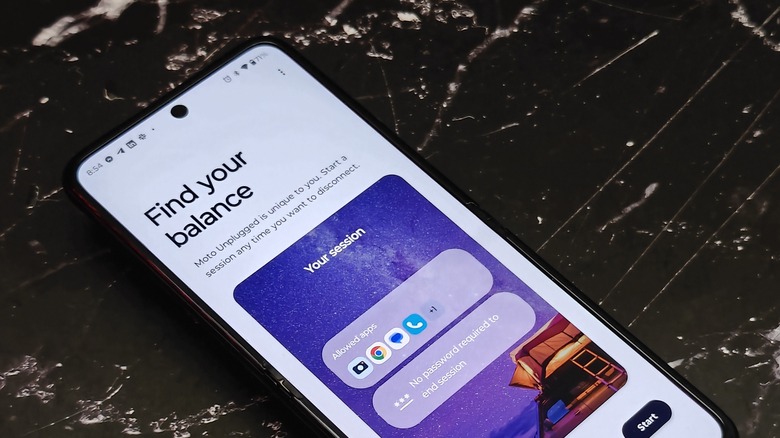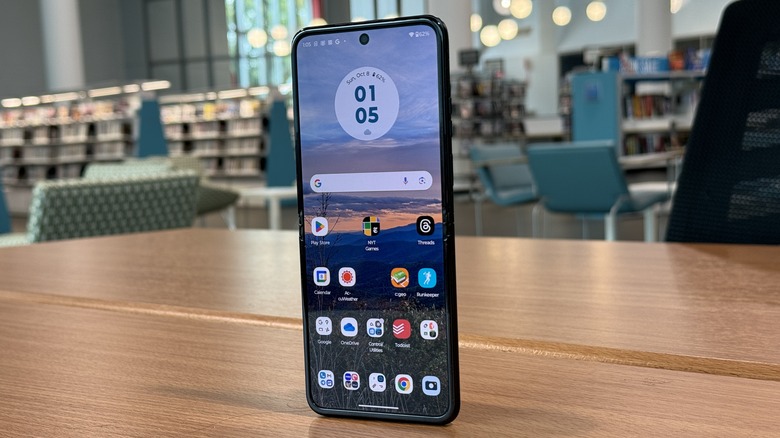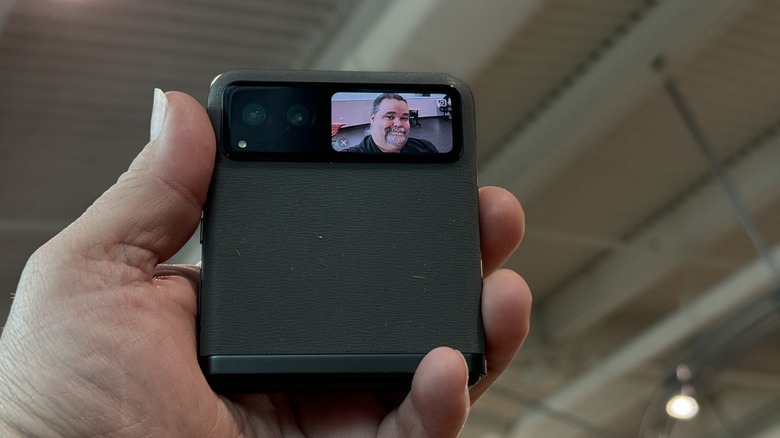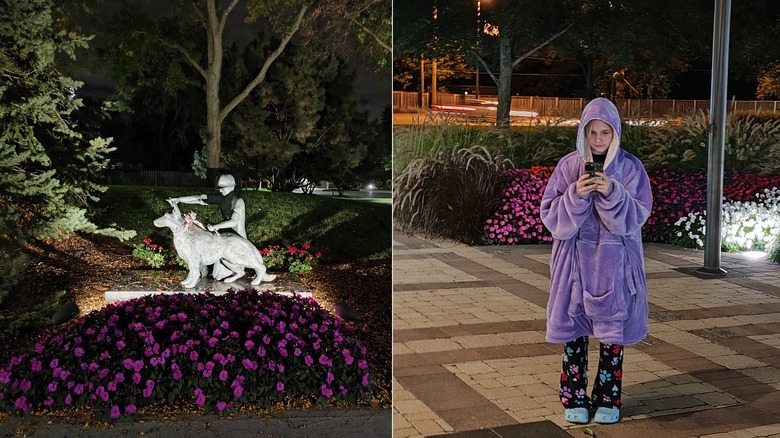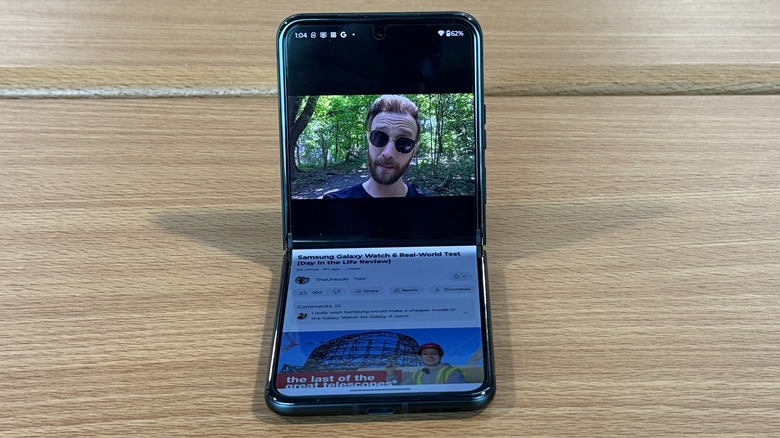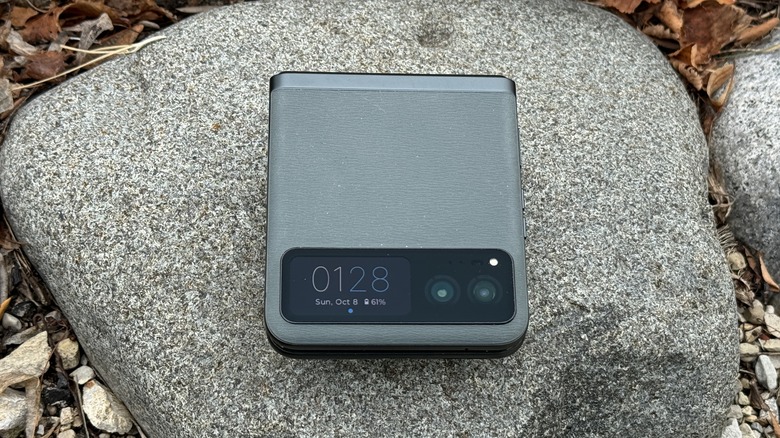Motorola Razr (2023) Review: A Midrange Foldable With A Matching Price
- Very inexpensive
- Great vegan leather look and feel
- Excellent software
- Cameras aren't as good as they should be
- Midrange processor and specs
There are a lot of reasons why you might not want to buy a foldable phone. Durability is still a big concern. Folding phones are more fragile than their non-folding counterparts. Utility is still a question mark. Do you really need a phone that folds in half? Price is also a hurdle, except as of today, it's not really much of a hurdle anymore.
Motorola has officially launched the Motorola Razr (2023), and its introductory price starts at less than $600. That is a very big deal. That is putting a foldable phone in a consumer's hands for less than the cheapest iPhone 15 in the United States is a win under just about any circumstances.
Make no mistake, Motorola had to cut some corners to get there. But the corners are understandable and without a doubt the correct corners to cut. You still get a good processor, great build materials, and a phone that fits into the change pocket of your jeans. Motorola provided a Razr (2023) for this review.
Familiar hardware
When Motorola first revealed the Moto Razr Plus and Moto Razr back in June, the company told us that many of the same components are used in the chassis of the phone. It's the same hinge, the same build materials, and the same inner display. The key differences come in the Snapdragon 7 Gen 1 processor which is decidedly more midrange, the small cover screen, and the vegan leather cover which feels rubbery and refreshingly grippy (though very hard to keep clean) compared to most glass-backed phones these days.
The phone only comes in one configuration — 128GB of storage along with 8GB of RAM, both of which are respectable by today's standards. The inner screen is a 6.9-inch LTPO OLED display with a refresh rate of up to 144Hz. The cover screen on the other hand has a maximum refresh rate of 60Hz.
The battery is a 4,200 mAh battery that can be charged at up to 30 watts (no charger in the box) and charged wirelessly at 5 watts. There's a dual-camera setup on the back and a single selfie camera on the inside. All told, on the specification sheet, this is a solid, midrange phone with a few specs that punch above their weight class.
That cover screen
The cover screen is much smaller than the Moto Razr Plus, reminiscent of the Samsung Galaxy Z Flip 4. As such, its functionality is much more limited. You're limited to six "panels" as Motorola continues to call them. Those panels are an Audio recorder, calendar, contacts, media, timer, and weather. The good news is that these panels all make a lot of sense working with the small screen, but on the other hand, the customizability is limited as well. You cannot use a personal image or a GIF as the cover screen's wallpaper. Notifications are nicely organized in a list that you can tap into to drill down to the details, which is a good thing.
This is helpful for checking notifications or the time or the weather all of which are common use cases for normal smartphones. If the cover screen can intercept you before you power up the device, you have a better chance of just grabbing that quick bit of information and getting on with your day. Motorola imagines that the Moto Razr will be more for people who want to check things quickly and move on or for those looking to digital detox a bit, which is why the company introduced its latest software feature — Moto Unplugged.
Eliminate the noise
Moto Unplugged is similar in function to a lot of other Digital Wellbeing apps that have come (and gone) in the past. Basically, it slips your phone into Do Not Disturb mode, turns off notifications, and allows you to determine what apps will be available to you. When you start it (either by launching the app or through a quick setting in the notification shade) you first choose how long the session will be (you can also schedule it ahead of time) and then you get a minimal interface with only the selected apps available.
You can end the session whenever you want, which returns your phone to normal. Be advised that any app you had open before you launched Unplugged will be closed and no longer available in the task switcher. Any apps you open while in Unplugged will stay open when the session ends.
If you're into this, it works fine. To some this is extraneous, and if you're the kind of person who sets this up in the first place, you're probably also the kind of person who can just not use your phone for a period of time. All the same, it's nice that Motorola is trying to address digital detox. It's better to have it and not need it after all.
Moto's clean interface
The rest of the software is typical of what you'll find in a Motorola phone which is very, very good. Ever since its brief stint as a sub-brand of Google, Motorola has embraced the simplicity of a clean Android build and that remains to this day. It's extremely refreshing, and it contains gestures and shortcuts that you will genuinely miss when you switch away from a Moto phone. It's all there and it's still great.
Even Motorola's Ready For is built into this inexpensive device. Ready For is basically Motorola's answer to Samsung's Dex, but in many ways, it's better. Ready For is criminally underrated in the smartphone industry with its ability to wirelessly stream apps, share clipboard files, and photos, and more. Ready For is arguably the best part of Motorola's already great software and it makes using a Moto phone along with a PC a delight.
Camera hardware
Of course, then we come to the other end of the Motorola experience spectrum, and this can't be emphasized enough. If Motorola abandoned all other aspects of product R&D and simply focused on camera quality, its next phone would be just fine. Unfortunately, Motorola has a long history of subpar cameras, even on flagships like the Motorola RAZR Plus and the Motorola Edge Plus from earlier this year. The Moro Razr is no exception, though, like Motorola phones in the past, some good shots are possible.
The hardware on the Moto Razr is solid on paper. The main sensor is a 64-megapixel shooter with an f/1.7 aperture, autofocus, and optical image stabilization. The wide-angle camera is a 13-megapixel sensor with f/2.2 aperture, autofocus, and a 120-degree field of view. The ultrawide camera also stands in as a macro lens when you want to grab some close-ups. This is a fairly standard array of cameras in the midrange space.
Breaking down the break downs
The first noticeable area where Moto could use some improvement is in the color science between the main and ultrawide cameras. Most of the time, you're going to get a darker shot, which is understandable given the differences between the sensor sizes and apertures, but then you'll get a pair of shots where the ultrawide actually turns out brighter. This is mostly in the greens and blues you'll get from landscape photos.
Overall, the ultrawide camera loses a lot of detail, such as blurring individual flowers or leaves together into a large mass. When focusing in a macro lens, there's a very short depth of field, meaning you can find parts of your subject out of focus when you get up close and personal.
As for the main camera, when the light is good, you can get some respectable shots, that are really only going to hold up when uploaded to social media and compressed. Full-resolution shots get pretty rough, pretty fast.
The selfie camera is not great either. Even in broad daylight, you still get a good amount of grain in the darker areas. Fortunately, you can use the cover display as a viewfinder and you can snap selfies with the main camera which will turn out better. Speaking of which, when shooting a photo, you can also turn the viewfinder into a little cartoon character to get the kiddos to smile, just like you can with the Moto Razr Plus.
Darkness Falls
Low-light performance is about what you'd expect on a midrange phone. You'll want to stick with the main camera only, and in cases where you're taking photos of objects that are not moving, you can capture a decent shot. Any ovement will destroy any composition in the shot. But non-moving subjects can be captured decently. Aside from movement, focus can be a problem when trying to lock on to your subject, especially if it's a person and they're not standing perfectly still.
You can get some decent shots with decent exposure which is a fun surprise. Again, those shots will be "social media good". Don't zoom in to full resolution, or things start to fall apart pretty quickly. Still, if your focus is on social media, this camera is serviceable.
Video is a challenge to put it politely. There's the usual judder and shaking with footfalls, even with an optically stabilized main sensor. Most concerningly is the grain – not just in dark areas, but in any areas with a consistent color — such as a light blue sweatshirt. It's like the camera is having trouble processing the video on the fly. Dark area grain is common, but usually lighter colors don't exhibit those symptoms.
Overall the camera setup here is not impressive. The camera is a bit of a mixed bag. Sometimes you can get a good shot, other times you won't realize your shot was not good until you bring it home and put it up on a monitor. If your primary focus is photography and social media, you might be able to get by. But if you want to capture memories for future generations (not on Facebook) then you'll want a better camera.
Battery and Performance
On the performance side, this phone runs a Snapdragon 7 Gen 1 processor which is decidedly midrange. Multi-tasking and moving from task to task flows pretty well with occasional stutters. The same goes for gaming with "Call of Duty: Mobile", a game that traditionally doesn't demand too much in terms of processing power and can stutter occasionally, but not in any way that makes the game unplayable.
On Geekbench 6, the phone returns 1,062/3,034 single/multi-core scores, which won't top any charts for sure, but are pretty respectable. Again, this phone performs fine in day-to-day activities. It won't blow you away with its speed, but it will be able to keep up with most social media surfers.
As for battery life, the phone is definitely a one-day phone. The 4,200 mAh battery is a little over 10% larger than the Moto Razr Plus's power pack, but the exterior screen is less functional. You'll have to open this phone a lot more than the Razr Plus. On the other hand, the smaller cover screen allows you to "digital detox" a bit by knowing what's going on, but keeping it at arm's length with that extra step of opening the phone. So if you're looking to use your phone less, the Moto Razr might be a good way to go.
Moto Razr Final Verdict
If this phone existed in a vacuum, it's really just ok. It's not a great phone or an amazing phone, but what it offers is pretty special. This is a $599 ($699 after the introductory price drop) foldable phone that is available to buy in the United States. That is a very, very big deal and if you are looking for a flip-style foldable in the U.S., you suddenly have a lot of options in a lot of price points. When Motorola introduced us to the Moto Razr Plus and Moto Razr in June, it promised that the Moto Razr would be "meaningfully cheaper" and at $400 (or $300 depending on when you buy it) it is not only meaningfully cheaper, it's meaningfully cheap and very accessible.
So the phone itself is not the best foldable you can buy. But it's an impactful statement all the same. You may not love the phone, but you should love what the phone represents. This is a midrange foldable, which is a sign that foldables have reached a maturity level where the midrange exists.
As for whether or not you should buy it, that's a tougher question. If you want a foldable and you're on a budget, this is a good option. If you don't care too much about photography or videography, this phone will work. If you're curious about foldables, and you don't want to pay a price that has a comma in it, this is a good choice.
In terms of the overall experience, Motorola puts it all together nicely. It just needs to figure out the camera. Once it does that, Moto will be a force to be reckoned with. But for now, it can be proud of the product, the price point, and its position here in the United States. You can find the Motorola Razr (2023) for sale at Best Buy for a price of approximately $600.
